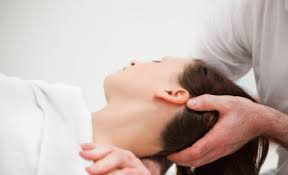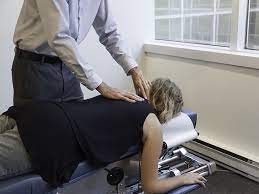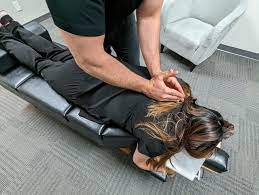

Neck humps are more than just a cosmetic issue—they can cause discomfort, affect your posture, and even contribute to long-term health problems if not addressed.
But can cervical adjustments truly correct this pesky problem?
Let’s dive into the science behind neck humps, how they form, and whether chiropractic treatments like cervical adjustments are the answer you’ve been looking for.
Article Index
- Understanding Neck Humps: What Causes Them?
- What are Cervical Adjustments?
- Can Cervical Adjustments Fix a Neck Hump?
- The Role of Neck Hump Correction Exercises
- Prone and Upper Cervical Adjustments Explained
- Atlas Neck Adjustment: Is It Effective?
- Dowager’s Hump Correction: Chiropractic vs. Exercises
- Conclusion: Can Cervical Adjustments Really Correct a Neck Hump?
Understanding Neck Humps: What Causes Them?
A neck hump, often referred to as a “dowager’s hump,” is a forward head posture accompanied by a rounded upper back and a visible hump at the base of the neck.
It can result from poor posture, osteoporosis, or even conditions like kyphosis.
The repetitive habit of slouching or looking down at your phone can lead to weakened neck muscles and a misalignment of the cervical vertebrae, eventually forming this unsightly hump.
If not addressed, it can cause neck pain, limited mobility, and even impact your breathing.
What are Cervical Adjustments?
Cervical adjustments are chiropractic manipulations targeting the cervical spine, the seven vertebrae in the neck.
Chiropractors use their hands or specialized tools to apply controlled force to a specific area of the cervical vertebrae, aiming to restore proper alignment and improve mobility.
Techniques like the prone cervical adjustment or the upper cervical adjustment focus on relieving tension, correcting misalignments, and improving overall spinal health.
The effectiveness of these adjustments in correcting postural issues like a neck hump is often debated.
However, evidence suggests that regular chiropractic care can help alleviate some symptoms associated with poor posture, though it may not be a standalone solution for correcting a neck hump.
Can Cervical Adjustments Fix a Neck Hump?
The big question is: can a cervical adjustment really fix a neck hump? The answer is both yes and no. While cervical vertebrae adjustments can help realign the spine and reduce tension, they alone may not completely eliminate a neck hump.
Chiropractic adjustments can, however, serve as a crucial part of a comprehensive treatment plan.
A study published in the Journal of Manipulative and Physiological Therapeutics showed that combining chiropractic adjustments with exercises tailored for neck and upper back strengthening significantly improved postural alignment in patients with a hunched neck.
This indicates that while adjustments can aid in realigning the spine, they work best when combined with other corrective measures like targeted exercises.
The Role of Neck Hump Correction Exercises
To truly correct a neck hump, exercises that strengthen the back and neck muscles are essential.
Neck hump correction exercises such as chin tucks, wall angels, and thoracic extensions can help reverse the forward head posture that contributes to the hump.
These exercises work by retraining the muscles to hold the spine in a more neutral position, thereby reducing the appearance of a neck hump over time.
Studies have shown that combining chiropractic care with a structured exercise program can result in better postural correction and pain relief compared to adjustments alone.
So, while cervical adjustments play a role in correcting the spine, exercises are crucial for maintaining these corrections and preventing recurrence.
Prone and Upper Cervical Adjustments Explained
Prone cervical adjustments involve lying face-down while a chiropractor manipulates the cervical spine.
This technique is designed to alleviate tension and improve alignment in the upper back and neck.
It is particularly effective for people with chronic neck tension and can provide temporary relief from the discomfort associated with a neck hump.
Upper cervical adjustments, on the other hand, focus specifically on the first two vertebrae in the neck—known as the atlas and axis.
Misalignments in the c2 vertebrae can contribute to a hunched neck and even impact balance and coordination.
Realigning these vertebrae can relieve pressure and improve posture, making it an effective treatment for those suffering from a neck hump due to misalignment in the upper cervical spine.
Atlas Neck Adjustment: Is It Effective?
The atlas neck adjustment is a specialized chiropractic technique targeting the topmost vertebra, the atlas.
It is believed that misalignments in this area can cause a ripple effect throughout the spine, contributing to issues like a neck hump.
By correcting the position of the atlas, chiropractors aim to realign the entire cervical spine.
While there is anecdotal evidence supporting the effectiveness of this technique for improving posture and reducing neck pain, scientific studies are limited.
Some research suggests that atlas neck adjustments can improve spinal alignment and reduce symptoms of tension headaches, but more studies are needed to confirm its effectiveness specifically for correcting a neck hump.
Dowager’s Hump Correction: Chiropractic vs. Exercises
Dowager’s hump correction requires a multi-faceted approach.
Chiropractic care can provide immediate relief and help in realigning the spine, but without strengthening the muscles through exercises, these adjustments may not hold long-term benefits.
Dowager’s hump correction exercises such as the cat-cow stretch, shoulder blade squeezes, and resistance band pull-aparts can be highly effective.
These exercises target the muscles responsible for maintaining proper posture, ensuring that the spine stays aligned even after chiropractic adjustments.
Conclusion: Can Cervical Adjustments Really Correct a Neck Hump?
So, can cervical adjustments really correct a neck hump?
The truth is that while cervical vertebrae adjustments can significantly aid in correcting spinal misalignments and relieving symptoms, they are not a standalone solution for fixing a neck hump.
The most effective approach combines chiropractic care with a dedicated regimen of Neck Hump Correction Exercises.
This dual approach addresses both the structural and muscular components of the problem, offering a more comprehensive solution.
If you are dealing with a neck hump, it is best to consult with both a chiropractor and a physical therapist to develop a treatment plan that includes adjustments, exercises, and lifestyle changes.
With the right strategy, you can improve your posture, reduce discomfort, and finally say goodbye to that stubborn neck hump.
References:


